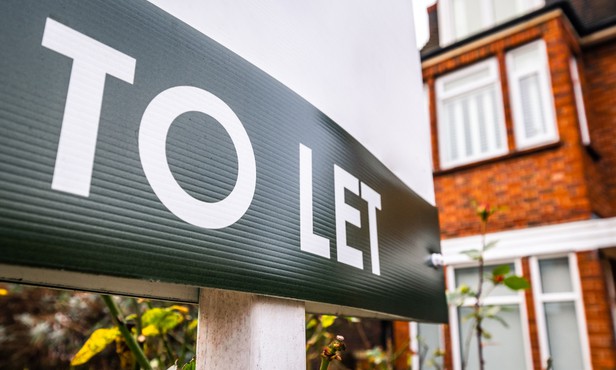
The average rent of a newly let property stands 8% or £68 per month higher than it did in February 2020.
February 2021 also marked the first time that the South East recorded double-digit growth.
Across Great Britain as a whole, rents rose by 5.6%, the fastest rate of growth since February 2015.
In contrast, rents in Greater London fell 0.2% year-on-year, with the drop driven by falls in inner London.
This is after the capital saw five months of consecutive growth.
Average rents in inner London fell 17.7% annually, the largest decrease recorded since the onset of the pandemic.
Meanwhile in outer London, rents grew 5.3% on a yearly basis, the sixth consecutive month of growth.
According to Hamptons, rental growth nationally is due to there being 300,000 fewer properties on the rental market.
Last month, the number of rental homes on the market fell by double-digit percentages in every region apart from London, compared with the same time last year.
The South West and Wales saw the largest declines, with 48% fewer homes available to rent in February than the same time last year.
Looking to the urban-rural divide, there were 16% more homes available to rent in cities across Great Britain in February 2021 than at the same time last year.
While towns and country locations recorded falls of 28% and 52% respectively.
This divide was also evident in would-be tenant numbers, which remained flat in the countryside, while dropping 10% in cities.
Due to the lack of rental homes, half of landlords letting a property were able to secure a higher rent than they had previously achieved.
This is the highest proportion since 2016, with an average increase of £60 per month.
In line with weak rental growth in the capital, fewer London landlords at 37% were able to secure higher rents, marking the lowest proportion recorded in any region.
In contrast, 62% of landlords in the South West were able to achieve higher rents on their properties.
Aneisha Beveridge, head of research at Hamptons, said: “This year we’ve seen a sharp decline in the number of rental homes coming onto the market.
“Would-be tenants are now faced with significantly less choice, which in turn is pushing up rents.
“And with many landlords having multiple offers on the table, half of investors have been able to increase the rent they charge.
“Rental stock levels have also been hit with the onset of the pandemic causing investors to hold back.
“This has been compounded by emergency legislation which saw landlords having to extend a tenant’s notice period to a minimum of six months, reducing turnover further.
“At the same time, many renters who were looking to buy had to put their plans on ice and continue renting, as banks sought larger deposits for house purchases.
“However, there are signs that this could change. Over the last five months, and in an effort to beat the original stamp duty deadline of the end of March, landlord purchases started to rise, which will add to stock levels when these homes complete.
“Meanwhile the government announced a new Mortgage Guarantee Scheme in the Budget which is aimed at helping would-be buyers with small deposits, many of whom are currently renting.
“Both factors, alongside the ending of the eviction ban in April, mean rental stock levels may have bottomed out.”



